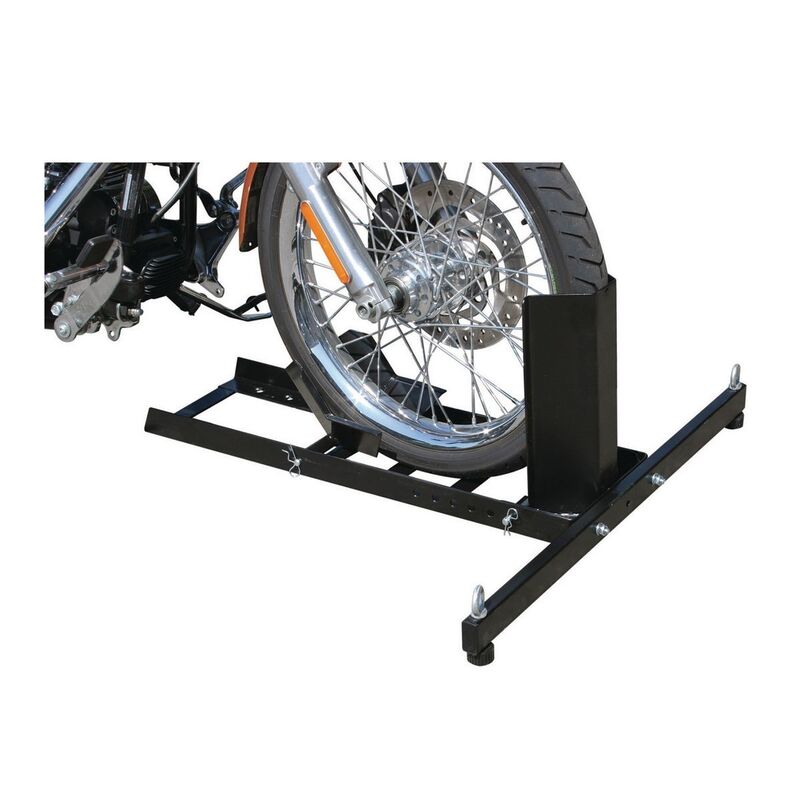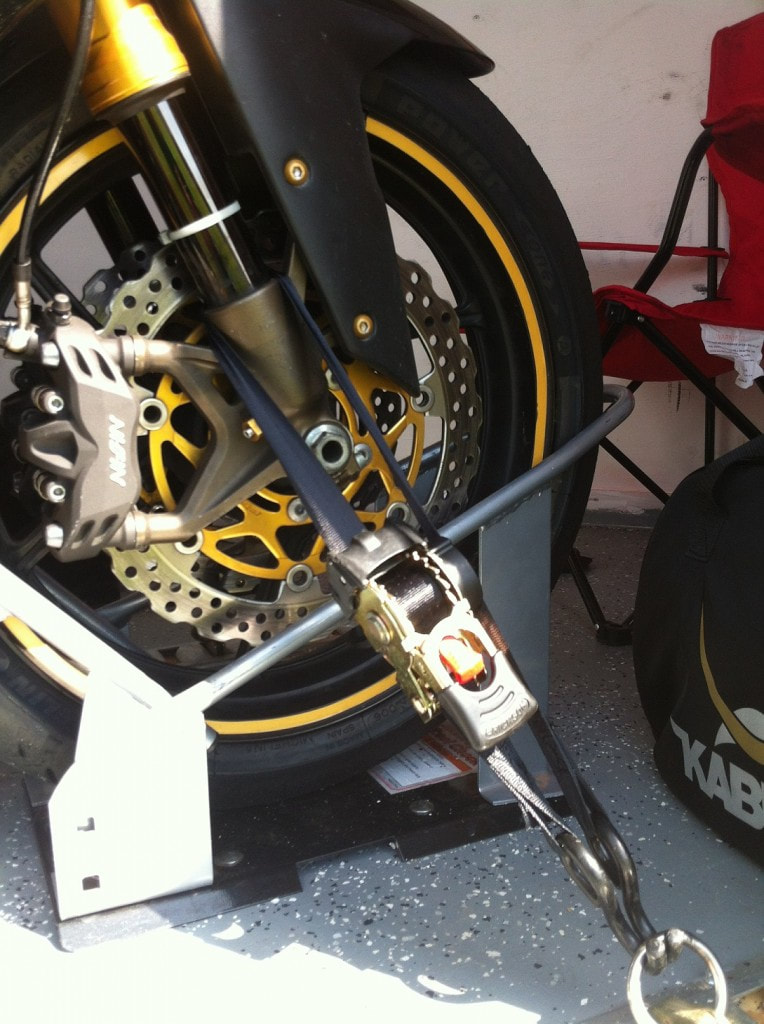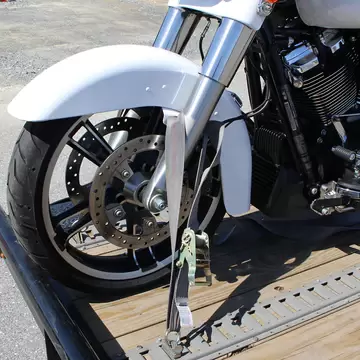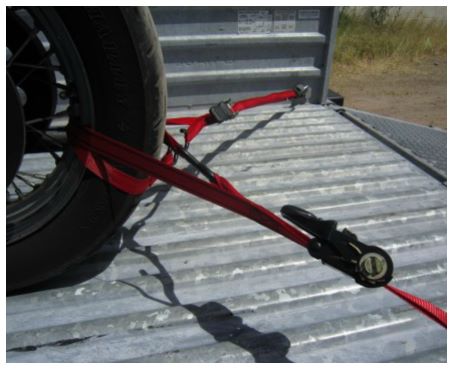|
There are a lot of videos out there about how to load and strap down a bike. Most of them are dead wrong. The best advice is "Don't", as in, "Have it towed by a qualified motorcycle towing service." As you may have already noticed, on my website I recommend one such service here in Austin, https://ATXBikeTow.com However, if you are like me, and have access to a tow vehicle (a car, SUV, or truck with a hitch) you will probably ignore that advice and do it yourself. So, for all the stubborn SOBs like me, here are some tips for how to trailer your bike without hurting it or yourself. FIRST, never try to put a big bike (anything bigger than a 125) into a pickup truck. The load bed is too high, so your loading ramp is going to be too steep, and your bike falling from that high is likely to do thousands of dollars of damage to the bike...and more to you when you try to save it. Just don't. Yes, some folks have gotten away with it...but so many have not. Conversely, DO use a trailer, preferably a motorcycle trailer. There are lots of different types of motorcycle trailers out there, but the single most important characteristic they all share is some sort of feature that helps restrain the front tire of the bike. The simplest is indentation in the front of the trailer like this... That simple pocket in the front of the trailer really helps keep your bike where it belongs. There are other mechanisms out there, all broadly described as a "Motorcycle Wheel Chock". Most can be added to the floor of an ordinary flatbed utility trailer or mounted inside an enclosed trailer. But the truth is, even some blocks of wood nailed to the trailer floor on either side of the front wheel, so the front tire cannot scoot side to side as the trailer bounces around, can be a big help. So don't feel like you need to break the bank to get the job done. But back to trailers vs. pickup trucks...the key issue is that a trailer is going to have a much lower load bed than a truck and that makes the whole operation MUCH safer. One of the best deals in motorcycle trailering is renting a motorcycle trailer from U-Haul. They have great little trailers and they rent them pretty cheap. How to Strap Down a BikeThis is the subject that most often comes with bad advice. Strapping down a bike is done wrong so often that it is hard to find examples of it being done right. The picture above of the bike in a U-Haul trailer is a great example of the WRONG way to strap down a motorcycle for towing...or onto a motorcycle lift for repairs. The approach is the same either way. Note in the photo above that the tie down straps are connected to the forks. That is good, as far as it goes. That is way better than tying the straps to the handle bars...but it still is not right. The problem is that the straps are tied on above the lower half the the fork legs. The upper half the the fork legs move up and down when the bike hits a bump because there are springs inside the fork legs. That is great for your butt when you are riding the bike. You get a nice comfortable ride and your tires stay stuck to the road and make it easier to maintain control over bumpy surfaces. But the fact that the upper parts of the bike will bounce up and down when you hit bumps in the road makes them a TERRIBLE place for the tie down straps. Here's the deal. If you tie off above the springs, every time your bike bounces DOWN, the straps get loose, and that's when your bike falls over in the trailer. Not good. And when the bike bounces back up, the straps can get so tight, so suddenly, that metal parts (like handlebars) can be bent and plastic parts can be broken. Some folks will tell you the way to address that problem is to strap it down REALLY tight, so the suspension is compressed so far the bike cannot bounce. That is also bad advice. The correct way to tie down a bike is to attach the straps below the suspension. You can attach to the wheels / tires, to the axles at the base of the fork legs or the swing arms (rear wheel), or to the lower fork legs. As long as the front wheel of a bike is tied down tight to the trailer, the bike cannot fall over and there is no danger of damage to the suspension or the handle bars. If tying down the rear wheel makes you feel better, do that too. (I almost always do.) Yes, it is true that the main body of the bike will bounce up and down when the trailer hits bumps, but the bike is designed to bounce up and down when it hits bumps. No problem. As long as the wheels stay firmly planted the bike will stay put. There are some tie down accessories that can make the job a little easier, but none of them are necessary. One example is a purpose made harness for the wheels themselves. They are usually used on rear tires because the front wheel is usually too easy for a wheel strap to be necessary. But there are a number of valid ways to get the job done. Here are a few... The bottom line is, if the wheels are tied down tight, the bike cannot fall. You cannot do better than that. If you want to watch a GOOD video on the subject, watch this guy.
Tide Down Demo Comments are closed.
|
Categories
All
Archives
January 2024
|
|
© WrenchMonster 2018
|
WrenchMonster™ is a Division of DemonLite, LLC.
|










 RSS Feed
RSS Feed